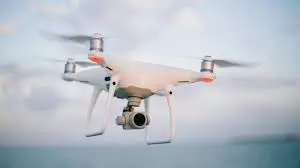Army seeks anti-drone ammunition for anti-aircraft guns

New Delhi: With the rising use of drones in modern conflicts, the Indian Army is moving to acquire specialised anti-drone ammunition for its current anti-aircraft systems, the Zu 23mm and Shilka Weapon Systems.
These high-rate-of-fire anti-aircraft guns are integral to the Army's Air Defence, tasked with protecting critical and vulnerable areas from aerial threats. To enhance their capability against drones, the Indian Army has issued a Request for Information (RFI) to the domestic industry for the production of 23mm anti-drone ammunition.
Recent conflicts have highlighted the effectiveness of drones and loitering munitions in suppressing enemy air defenses and executing precision strikes on ground-based Army Air Defence platforms, according to the Army’s RFI. "Drones, especially Commercially Off the Shelf (COTS) varieties, possess low radar cross-sections (RCS), small sizes, higher survivability, and are relatively low-cost. Countering them with existing gun ammunition poses significant challenges, necessitating the development of anti-drone ammunition compatible with the Zu 23mm and Shilka Weapon Systems," the RFI stated.
Currently, these anti-aircraft guns utilise 23mm Armour Piercing Incendiary Tracer (APIT) and High Explosive Incendiary Tracer (HEIT) ammunition. However, their effectiveness against drones is limited due to the low probability of hits, as the guns are manually operated and the ammunition requires direct impact to activate and cause damage or destruction. "Thus, there is a need for 23mm anti-drone ammunition to increase hit probability," the RFI explained.
The Indian Army emphasised that the new anti-drone ammunition must feature proximity or timed fuzes. These fuzes would automatically detonate the explosive device when approaching a drone or loitering munition within a certain distance, enhancing the likelihood of neutralising the threat without requiring a direct hit. Additionally, the shell fragments must be designed in adequate number, size, shape, and spread patterns to effectively damage or destroy drones upon detonation.
Next Story

